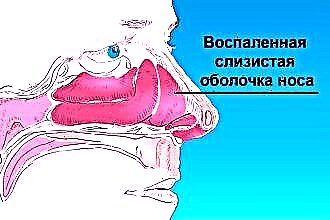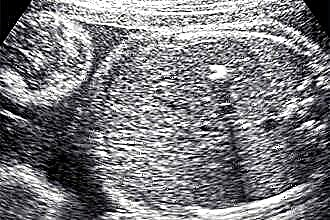Why is there a clicking sound in the throat? It is believed that a healthy person does not hear the sounds that his body makes. There are few exceptions to this rule, one of them is the episodic crunch of joints (for example, limbs) that quickly disappears and is not accompanied by pain. This does not cause concern and is perceived as a normal, physiological phenomenon, especially if a person has spent a long time remaining motionless. However, if it clicks in the throat when swallowing, there is cause for concern. In order to attract a large number of customers, leading Internet clubs are developing special loyalty programs. To get the Play Fortune debut bonus, you just need to register on the website in any convenient way. After a few moments, customers receive the first gifts, the quality and quantity of which will only increase over time! An unpleasant sound arises suddenly and sometimes causes such significant discomfort that all the patient's thoughts are focused only on finding the reasons and a way to get rid of the obsessive clicking.
Causes
 The acoustic background, that is, the sounds that surround a person, affect his condition to varying degrees. External sound impulses that cause inconvenience can be muted or, in order to reduce the degree of sound load, move away from them at the required distance, create a barrier (earplugs inserted into the cavity of the external auditory canal). However, the situation is completely different if the source of the unpleasant sound is the patient's own body.
The acoustic background, that is, the sounds that surround a person, affect his condition to varying degrees. External sound impulses that cause inconvenience can be muted or, in order to reduce the degree of sound load, move away from them at the required distance, create a barrier (earplugs inserted into the cavity of the external auditory canal). However, the situation is completely different if the source of the unpleasant sound is the patient's own body.
Complaints about clicking and crunching in the throat are, unfortunately, not a rare phenomenon. The circumstances of the onset of the symptom are different - someone noticed it in a state of full health, someone - during or after an infection. Sometimes a click in the throat disturbs the patient after an injury. It is not always possible to trace a direct connection between any pathological condition and an obsessive symptom. In some cases, it continues to appear over and over again, although, it would seem, there is no reason for this. Why does it click in the oropharynx? There are several probable reasons:
- Eagle-Sterling Syndrome.
- Dysfunction of the temporomandibular joint.
- Fracture of the hyoid bone.
In addition to the pathological conditions listed in the list, in case of clicking during swallowing, the following should be excluded:
- GERD (gastroesophageal reflux disease);
- osteochondrosis of the cervical spine;
- arthritis of the cartilage of the larynx;
- laryngeal cysts.
Clicking sounds are sometimes normal and do not require any treatment.
A crunching and snapping in the throat can be observed even in an absolutely healthy person. This is not a sign of a dangerous disease - including neoplasms. However, it can be argued that nothing threatens the patient only after a comprehensive examination, which necessarily includes an examination of the cavity of the oropharynx and larynx by an otolaryngologist.
Description of complaints is an important part of the diagnosis, which can facilitate or, conversely, complicate the search for the cause of the disease. There are classic complaints typical of specific pathologies - but clicking sounds in the throat do not refer to specific symptoms. They can occur in various diseases and, as already mentioned, even in the absence of pathological changes. In this case, attention should be focused on such issues as:
- Localization of sound sensation.
Clicks in the oropharyngeal region can be produced not only by the cartilage of the larynx, but also by other anatomical structures located near the throat.
- Connection with the position of the body, head, jaws.
Sometimes patients complain that the obsessive sound bothers them only when lying down or, conversely, in an upright position, when bending over. In this case, swallowing plays a secondary role, helping to "feel" clicking sounds and crunching.
- Duration of preservation, connection with factors provocateurs.
Clicks can be episodic or relatively constant - the first option is most often observed. They are also able to appear after a certain action, movement, even emotional experience.

- The presence of pain syndrome.
If the patient complains not only of clicking sounds, but also of pain, this can bring the doctor closer to understanding the causes of the disease.
To cure a disease, you need to find out its etiology (cause). A clicking sound is a symptom that serves as a guideline for diagnostic search, but is not a “point of application” for drugs and non-drug procedures.
Eagle-Sterling Syndrome
Eagle-Sterling syndrome, or stylohyoid syndrome, is quite multifaceted. It includes two main subtypes - stylopharyngeal and styloid-carotid syndromes. The development of pathology is due to:
- an increase in the size of the styloid process of the temporal bone;
- lengthening of the horns of the hyoid bone;
- calcification (deposition of calcium salts) in the stylohyoid ligament.
Symptoms are explained by the pressure of the listed structures on the anatomical areas of the oropharynx, the internal or external carotid artery. A click in the throat during swallowing is not necessary, but a likely manifestation. One of the variants of pathological changes or their combination can be observed. Because Eagle-Sterling syndrome has many features, it is not easy to diagnose. Sometimes patients spend months or even years in search of the true cause, turn to doctors of different profiles, while the treatment (for example, anti-inflammatory drugs) is unsuccessful.
The leading symptom of Eagle-Sterling syndrome is pain - in the throat, in the front of the neck, in the ear - as a rule, unilateral.
In this case, the clicking sound appears sporadically, the patient's attention is focused mainly on the pain syndrome, which can be constant, exhausting, growing towards the evening.
Temporomandibular joint dysfunction
 Dysfunction of the temporomandibular joint occurs due to:
Dysfunction of the temporomandibular joint occurs due to:
- wrong bite;
- spasm, overload of the chewing muscles;
- overexertion of the masticatory muscles in a stressful situation;
- features of the anatomical structure of the joint and surrounding structures.
The disease can also be associated with infectious and non-infectious inflammatory processes. One of the forms of dysfunction of the temporomandibular joint is Kosten's syndrome, which is characterized by vibratory noises of an objective (audible not only to the patient, but also to those around him). The patient clicks in the throat - the appearance of a sound can be triggered by swallowing and is explained by the displacement of the articular disc due to increased muscle tone. Although the source is the temporomandibular joint, patients may feel that "sound noise" is coming from the throat or larynx.
Hyoid bone fracture
Fracture of the hyoid bone occurs as a result of trauma to the cervical spine, larynx, lower jaw and is accompanied by vivid clinical manifestations - severe pain, impaired swallowing (dysphagia), a high likelihood of asphyxia (suffocation). When the fracture does not affect the bone body (the most massive area), but occurs in the region of the horns of the hyoid bone, there is:
- Soreness when opening the mouth.
- Soreness when trying to stick out tongue.
- Frequent sinking of the tongue.
- Difficulty speaking.
- Difficulty swallowing.
An important sign is also the mobility and crepitus of bone fragments.This explains the presence of clicking and crunching - some patients feel it even long after being injured.
Clicks as a variant of the norm
What does a clicking sound in the throat mean when swallowing is normal? There is a concept of crepitus of the cartilage of the larynx - this is a crunch or clicking sound that occurs when an organ is displaced. The sound also appears when pressure is applied to the thyroid cartilage, or Adam's apple. It does not indicate a disease, on the contrary, it is a phenomenon expected for a healthy person.
Clicking and crunching in the throat when swallowing is not a sign of a neoplasm.
Many patients, having noticed cartilage crepitus, begin to suspect a tumor. However, for the neoplasm, on the contrary, the limitation of mobility of the larynx and the disappearance of the symptom of crepitus are characteristic. Therefore, the "sound background" is a relatively favorable sign.
Treatment
 The choice of treatment is determined by the nature of the pathology. With Eagle-Sterling syndrome, surgical correction of the size of enlarged anatomical structures is indicated. Conservative drug therapy is usually ineffective.
The choice of treatment is determined by the nature of the pathology. With Eagle-Sterling syndrome, surgical correction of the size of enlarged anatomical structures is indicated. Conservative drug therapy is usually ineffective.
If the patient has temporomandibular joint dysfunction, the following is performed:
- bite correction;
- limiting the mobility of the lower jaw with a bandage;
- physiotherapy;
- vitamin therapy;
- the appointment of chondroprotectors, etc.
The therapy regimen is drawn up depending on the cause of the development of dysfunction. Patients should not eat hard, hard foods, chewing of which increases the load on the joint. In pain dysfunction syndrome, liquid food is prohibited. In all cases, the foci of chronic infection in the oropharyngeal cavity are sanitized - for example, caries treatment.
In case of a fracture of the hyoid bone, emergency care is required - you should ensure free passage of air into the respiratory tract, prevent tongue retraction and take the patient to a medical facility.
What to do when cartilage crepitus is normal? If no pathological changes were detected during the examination, the doctor can inform that the patient is healthy. In this case, crunching and clicks are proposed to be ignored, not to focus attention on them. This will not help get rid of the "background sound", but so far this is the only thing that can be done.



